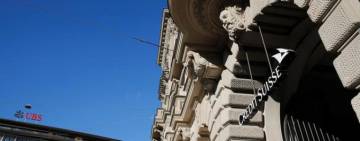New boss Ulrich Koerner’s plan may resemble his rival’s 2012 plan, but much slower
Credit Suisse is finally facing the magnitude of its problems. On Wednesday he announced that the new boss, Ulrich Koerner, will reduce the activity of trading to focus on wealth management. The final plan, scheduled for the end of the year, may resemble UBS’s in 2012, but much slower.
Relentless losses, including a $1.7 billion hit in the second quarter, made the gradualist strategy of outgoing Thomas Gottstein, who was recruited as a pair of safe hands in early 2020 after an espionage scandal cost him, untenable. the position to Tidjane Thiam. The intervening years have been anything but stable. The bank was rocked by the double bankruptcy of its clients Greensill and Archegos. Former Lloyds CEO António Horta-Osório joined the presidency to bring order, but quickly left after flouting pandemic rules.
New chairman Axel Lehmann wants Koerner to speed things up and cut costs to below €16.1bn, compared to an annualized rate of €17.5bn this year. He will focus investment banking on advisory services, such as mergers, rather than capital-intensive businesses, such as trading of credits, which have little relevance for property customers.
It is similar to the UBS strategy of October 2012, called “strategic acceleration from a position of strength”. The then boss, Sergio Ermotti, promised to eliminate some 90,000 million of risk-weighted assets in investment banking, that is, 57%, mainly in the trading fixed income. By the following summer, the bank had regained a share price above its tangible book value, indicating that investors believed it could earn a respectable return.
Copying that success is a big challenge for Koerner, who unlike Ermotti has never run an investment bank. He too faces a more difficult context. Fixed-income income from banks around the world grew in 2012, while commissions from mergers and placements were flat, according to analysts at Citigroup. Instead, some of Credit Suisse’s key divisions, such as the trading credit and leveraged finance, are plummeting. Weak markets mean the hit to revenue from going out of business could be faster and harder. And there may be fewer buyers for the exposures Koerner wants to divest, such as the $20 billion securitized products business in risk-weighted assets.
Meanwhile, the bank’s continued red numbers are depleting its common tier 1 capital, which it needs to finance its restructuring. The CET1 ratio fell to 13.5% in June, compared to 13.8% in March. Assuming that Koerner wants to stay above 13%, he only has a buffer of 1.4 billion to absorb any future losses from the liquidation of the Koerner businesses. trading. It might be safer to top it off with a capital increase.
UBS’s “acceleration from a position of strength” was partly a bluster, but it worked. Credit Suisse will find it hard to do the same from its position of weakness.














